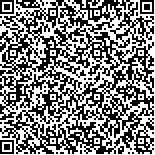下载中心
优秀审稿专家
优秀论文
相关链接
摘要

汶川Ms8.0地震诱发了大量次生地质灾害, 主要包括崩塌、滑坡与泥石流等。在获取到全面的研究区震后多源遥感影像后, 采用人工目视解译的方法, 对14个重灾县(市)进行次生地质灾害解译工作, 共解译出约46560处崩塌、滑坡、泥石流等地震次生地质灾害, 灾害总面积约687.1km2。基于GIS平台获取到它们的位置、平面面积等基本信息, 绘制了研究区的地震次生地质灾害分布图与点密度图。结果表明, 本次地震次生地质灾害与龙门山3条主断裂有较好的对应关系, 且主要分布在4个集中区域。最后, 分析了地震次生地质灾害分布与高程、坡度、地震烈度之间的关系, 高程范围为1000—2000m的灾害面积占灾害总面积的54.00%;坡度范围为30°—50°的灾害面积占灾害总面积的62.42%;地震烈度范围为Ⅺ—Ⅷ的次生地质灾害面积占灾害总面积的90.94%。为进一步研究汶川地震次生地质灾害的发育规律、发生机理、预测理论、灾区恢复重建与选址等问题提供了重要的次生地质灾害基础信息。
Large quantities of secondary geological hazards such as rock falls, landslide as well as debris flows were triggered by a magnitude 8.0 earthquake of Wenchuan, Sichuan, China. The identification of about 46560 secondary geological hazards through visual interpretation of multi-source remote sensing data over 14 counties in heavy disaster region after the overall re-mote sensing data were obtained. Their location and area information was input into GIS database. The distribution map, dot destiny map, histogram of number, total area, average area, area ratio, frequency of secondary geological hazards in 14 counties were drawn. Four regions of intensive geological hazards were identified. It is shown that there is a corresponding relation be-tween the distribution of secondary geological hazards and the main faults. At last, the relation between the distribution and ele-vation, slope angle and intensity of earthquake triggered geological hazards were established. About 54.00 percent of secondary geological hazards in the study area occurred between altitude of 1000m and 2000m; about 62.42 percents of secondary geo-logical hazards occurred between slope angle of 30° and 50°; about 90.94 percents of secondary geological hazards occurred between Ⅺ and Ⅷ intensity. This paper provides an important database of secondary geological hazards triggered by Wenchuan Earthquake for further research on development trend, mechanism, prediction of secondary geological hazards, restoration and rebuilding, site selection, etc.

